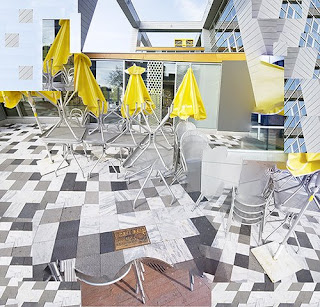In digital photography format is a lesser concept than with film. Due to the costs of medium and large format digital cameras few photographers use medium and large format digital cameras. Medium format digital cameras are often $10, 000 or more making them impractical for most people.
This is not the case with film formats.
There are cameras that shoot film larger than 35mm. These can be divided into two groups - medium format and large format. These cameras cost more than 35mm cameras.
Medium format cameras have some similarities to 35mm cameras. Some of these cameras look like oversized 35mm cameras. Like 35mm cameras, these cameras use a roll of film. Film is available in two lengths - 120 and 220. A frame of film from a medium format camera is 4 times larger than a frame of film from a 35mm camera. This means that an 8''x10'' print from a 120 frame of film will have the same print quality as a 4''x6'' print from a 35mm frame of film. There are also cameras that have reshaped the frame. The size of these is referred to in centimeters making a traditional 2 1/4'' x 2 1/4'' frame of film into 6cm x 6cm or simply 6x6. Popular alternative frame sizes include 6x4.5, 6x7 and 6x17.
Large format cameras, also referred to as view cameras, are quite different than 35mm cameras. They use sheets of film instead of rolls. Each sheet can only be used for one exposure. The sheets of film come in many different sizes. Two of the most popular sizes are 4''x 5'' and 8''x10''.
Each film size requires a separate camera designed to shoot only one size sheet of film. Almost all large format cameras require the use of a tripod. A sheet of film from a 4x5 view camera is 4 times larger than a frame of film from a medium format camera. This means that a 16''x20'' print from a 4x5 sheet of film will have the same print quality as a 4''x6'' print from a 35mm frame of film. A sheet of film from an 8x10 view camera is 4 times larger than a sheet of film from a 4x5 view camera. This means that a 32''x40'' print from a 8x10 sheet of film will have the same print quality as a 4''x6'' print from a 35mm frame of film.
View cameras are generally cheaper than medium format cameras, but medium format cameras can be easily used in a wider variety of shooting situations than view cameras.
Large format film cameras play a huge role in the history of photography.
Ansel Adams,
Walker Evans and
Edward Weston – 3 of the most important photographers in the history of American photography all used 8x10 large format cameras. They didn’t use them for everything, but much of their best known work was done in 8x10. I’m not quite sure anyone has really determined what 8x10 film is in megapixels. My best guess would be at least 800 megapixels. I guess we will all know for sure as bigger sensors get cheaper. As things stand now you cannot make a photograph like “Moonrise Over Hernandez” with a digital camera.
As film photography moves into the background of mainstream photography I hear more and more students concluding that “Moonrise Over Hernandez” was made with 35mm black and white film. Film may not stay around for a whole lot longer, but for now the most practical way to produce large high resolution large prints remains film larger than 35mm.
All text unless otherwise noted is ©2009 Paul Light. All rights are reserved.






